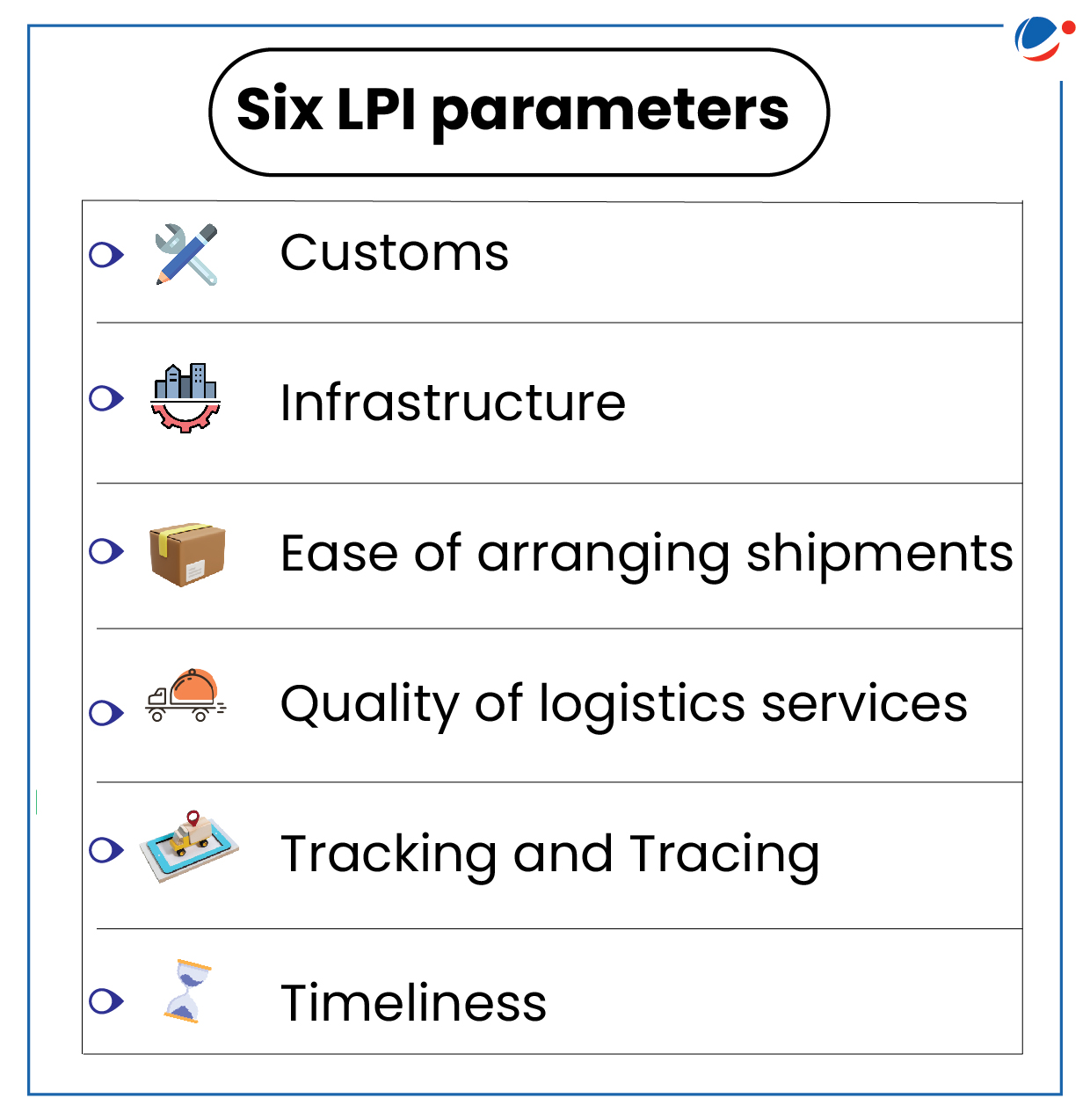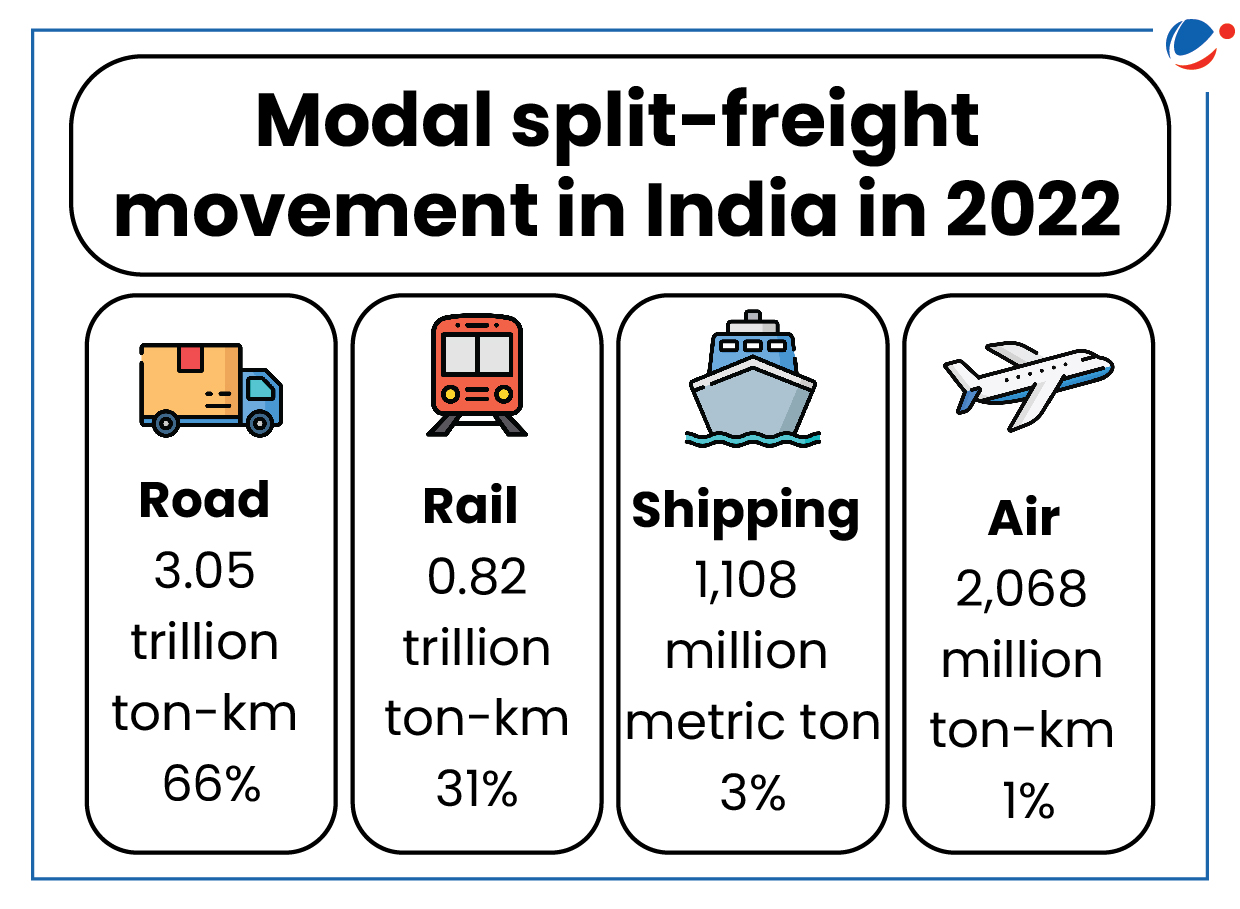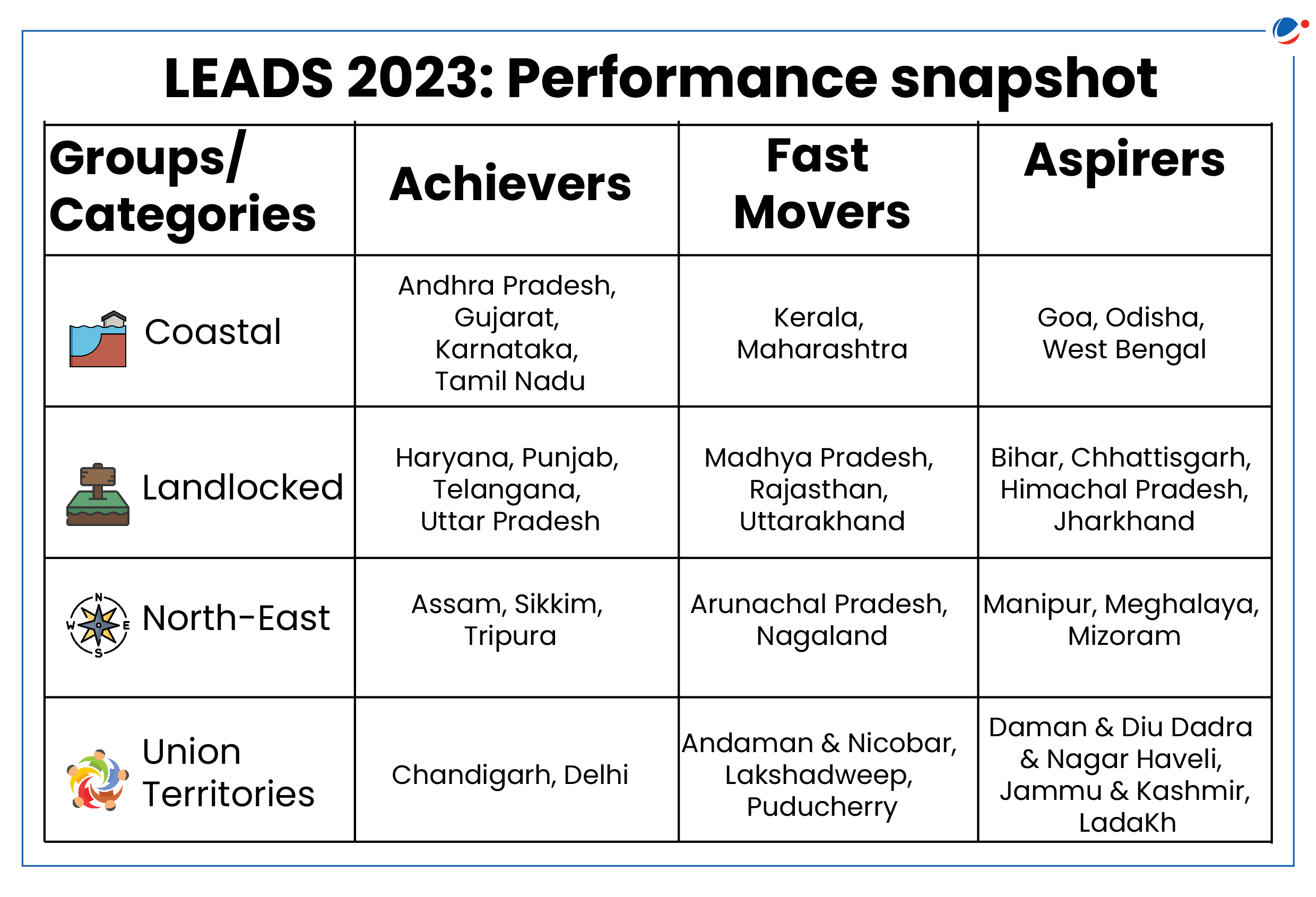Why in the news?
India's logistics cost has been worked out to be in the range of 7.8-8.9 % of Gross Domestic Product (GDP) in 2021-22 (in contrast to the widely circulated number of more than 10%).
More on the news
- The cost has been computed by the National Council of Applied Economic Research (NCAER).
- The task was assigned to the think tank by the Department for Promotion of Industry and Internal Trade (DPIIT).
- The World Bank has reviewed the methodology and has acknowledged that it has an appropriate baseline and framework to fine-tune it in future.
- Earlier available estimates included: NCAER's 8.9% of GDP for 2017-18; CII's 10.9% of GDP in 2015; and Armstrong and Associates' (A&A) 13.0% of GDP in 2016.
- The A&A estimate was the most widely circulated number and became the basis of the National Logistics Policy's agenda to reduce the logistics cost to global benchmarks by 2030.
 Logistic Performance Index Report (2023)
|
Logistics Landscape in India

- The major components of logistics are:
- Procurement of materials from outside suppliers, including negotiation, order placement, inbound transportation etc.
- Material handling in such a way that the warehouse can process orders efficiently.
- Warehousing, packaging and inventory control of finished goods until they are sold.
- Transportation i.e., physical delivery of goods from the organisation to the distributor or dealer and from the dealer to the end customer.
- Importance of efficient logistics infrastructure:
- Supply chain efficiency: vital for businesses to meet consumer demand promptly and optimise production processes.
- Connectivity and accessibility: contributes to economic integration by enabling businesses to reach a wider customer base.
- Cost reduction and competitiveness: due to reduction in transportation, storage and distribution costs.
- Job creation: in transportation, warehousing, distribution, and related services.
Steps Taken for Improvement of Logistic Sector in India
National Logistics Policy (NLP) 2022
- It addresses the soft infrastructure and logistics sector development aspect.
- It includes process reforms, improvement in logistics services, digitization, human resource development and skilling.
- It was launched in 2022 to complement PM Gati Shakti National Master Plan (NMP).
- PM Gati Shakti NMP addresses integrated development of the fixed infrastructure and network planning.
- The targets of the NLP are to:
- Reduce cost of logistics in India - Comparable to global benchmarks of 8-9% of GDP.
- Improve the Logistics Performance Index ranking – endeavour is to be among top 25 countries by 2030.
- Create data-driven decision support mechanism for an efficient logistics ecosystem.
- Comprehensive Logistics Action Plan (CLAP) as part of the NLP was launched covering eight action areas including Integrated Digital Logistics Systems, Services Improvement Framework etc.
Other Steps Taken
- Unified Logistics Interface Platform (ULIP)
- It is an indigenous data-based platform which integrates 34 logistics-related digital systems /portals across Ministries / Departments.
- GST data is also being integrated with ULIP.
- By signing Non-Disclosure Agreements (NDAs) and after due diligence, data on ULIP can be accessed by private players for use cases.
- EXIM (Export-Import) Logistics: To Address infrastructure and procedural gaps in India's EXIM connectivity and create an efficient and reliable logistics network.
- Also, the Logistics Data Bank (LDB) provides visibility for 100% of India's EXIM containers.
- Logistics given infrastructure status: It enabled the logistics sector to access infra-lending at easier terms.
- Logistics Ease Across Different States (LEADS): An indigenous logistics performance index on lines of the World Bank's LPI for logistics performance monitoring across states.
- The survey is conducted annually and States are ranked according to their performance.
- Multimodal Logistics Parks (MMLPs): They will act as freight aggregation and distribution hubs, and enable long-haul freight movement to reduce transport costs.
- Government has planned 35 MMLPs with an investment outlay of $6.2 Billion.
- Bharatmala Pariyojana: About 65,000 km of National Highways are to be constructed in two phases under the program.
- Dedicated Freight Corridors (DFC): To assist in achieving the target mandated under the National Rail Plan 2030 of increasing the share of rail freight traffic from 27% (2019) to 45% (2030).
- Sagarmala and Inland waterways: It is a flagship programme of the government to promote port-led development in the country through harnessing India's 7,500 km long coastline and 14,500 km of potentially navigable waterways.

Challenges before the Indian logistics sector
- Fragmented supply chain: With numerous small players operating independently across supply chain segments. This fragmentation results in suboptimal utilisation of resources, lack of standardisation, and difficulties in coordination and collaboration among stakeholders.
- Regulatory complexity: It includes multiple layers of taxation, compliance requirements and bureaucratic procedures, creating barriers to entry and hindering business operations.
- Last-mile connectivity: encounters challenges such as inadequate road infrastructure, traffic congestion and poor address mapping.
- Skill shortage: Lack of qualified personnel proficient in supply chain management, transportation, and logistics operations.
- Security concerns: It involves protecting goods, assets, and information from theft, fraud, cyberattacks, terrorism and natural disasters.
Way forward
- International Collaboration: It enables shared infrastructure, data exchange and coordinated decision-making, resulting in improved efficiency, flexibility, and resilience in logistics operations.
- E.g., The India-Middle East-Europe Corridor (IMEC) envisions a seamless linkage between India and Europe via the Arabian Peninsula.
- Focusing on sustainable logistics: This includes complying with key regulations and initiatives such as the Energy Efficiency Existing Ship Index, carbon intensity rating and emissions trading system.
- Technological Innovation:
- Artificial intelligence (AI)-powered Predictive analytics enables businesses to anticipate demand fluctuations, optimise inventory levels and enhance supply chain resilience.
- Internet of Things (IoT) sensors and connectivity facilitate real-time tracking and remote monitoring.
- Automation technologies such as robotic process automation and autonomous vehicles, reshape warehouse operations and last-mile delivery.
- Attract investment and investor interest: Adopting new policies to attract private and foreign investment as levers to fast-track infrastructure development.
- E.g., Singapore continues to invest in transport infrastructure to maintain the country's position as a world-class city in logistics.
- Increase the share of rail transport: The National Rail Plan envisages that the share of freight traffic by rail should go up from the current share of 27% to 45% by 2030.



